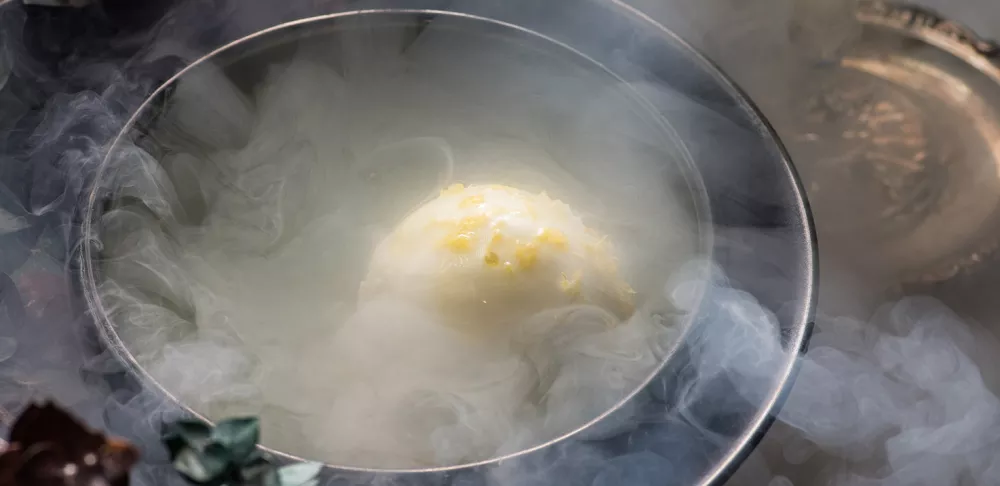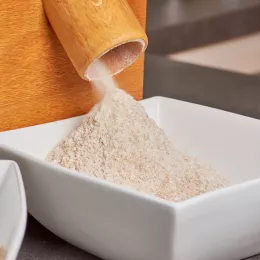Have you ever wondered why, when you have a cold or stuffy nose, you cannot taste anything, or your taste is very limited? Why the first thing a sommelier does before tasting a wine is smell it?
How does smell affect or change what we actually taste and how can we use that to affect or surprise our guests? Firstly, we need to understand what is happening when we taste any flavor. The taste buds on our tongues and the roofs of our mouths detect five categories: sweet, sour, spicy, bitter and umami. Every person has between 5,000 and 10,000 taste buds, and each taste bud has between 50 and 100 specialized sensory cells. When those sensory cells are stimulated, they send a message to the brain to identify what flavor is detected. However, if you place a peg on your nose and bite into a strawberry, you will probably taste some sweetness and maybe some sourness, but you probably won’t taste strawberry. Only when you release the peg, will you taste (and smell) the full flavor of the strawberry.
The sensation of flavor is actually a combination of taste and smell. This happens because as you chew, you force air through your nasal passage. These food odors or odorants are detected by receptor proteins on hair-like cilia at the tips of the sensory cells in your nose, which in turn send neural messages to the brain – these two messages are what we would perceive as a flavor or taste.
Recent research reveals that we can smell at least 1 trillion scents via 400 types of scent receptors (a count that was previously only thought to be around 10,000). To translate that for the food industry, we ask which is more important, smell or taste?
The obvious answer is a combination of both, but is smell not used more during typical meal experiences? If we can reportedly smell 1 trillion scents, surely this would be a dependable asset to the food industry. The use of scent can also trigger food memories, and a smell can trigger a food decision. If you can smell the scent of Indian food, it could trigger a decision to eat Indian food. You haven’t yet tasted anything, but the smell alone can trigger a memory of a previous experience. So why not somehow pump Indian spice scent all throughout the restaurant in an effort to increase sales?
Many bakeries will use a vent from the oven and pump the scent into the front of the store, so as soon you walk in, you can smell a freshly baked croissant, which in turn can help with impulse sales and increased revenue. Subconsciously, just via smell, customers are compelled to buy something. A scent has triggered memory, and that memory has triggered a sale before anything has even been tasted.
So how can this affect and contribute to a specific brand or business? At my Dessert Bar, we really try and use this concept to enhance the guests’ experience and sometimes try to influence how something tastes, based on what you smell before you taste it. One of our signature desserts is an olive and eucalyptus gelato. This was once the first course of our dessert tasting menu; however, eucalyptus was never added to the gelato. We used an essential oil, then introduced liquid nitrogen as a vehicle for the guest to smell the eucalyptus first before they tasted anything. A natural characteristic of eucalyptus is a menthol scent that clears sinuses, and in turn, allows for the olive oil flavor to really become the star. Even without consuming the eucalyptus (which is poisonous, unless you’re a koala), you can “taste” the eucalyptus with the olive oil, and it’s that flavor profile we wanted the guest to experience. This is a great example of how taste and smell can work together to alter, enhance or complement a flavor profile. On the other hand, it can also have a negative effect. For example, if you can smell burnt cheese, the grilled cheese you are eating will likely taste burnt also.
Can this be implemented into every meal experience? The short answer is no, and in many instances, it doesn’t need to be. A beef bourguignon stew doesn’t need red wine scent added to it, the cooking aroma is strong enough to carry the dish. In many restaurants, it also would not be appropriate, as it could inadvertently affect another guest’s experience. Using a rose aroma for a dessert is great, but if I am eating appetizers at the table next to you, this floral and sweet scent can be overpowering and ruin the savory courses I am tasting.
In certain instances, the combination of smell and taste can really enhance an experience and create a food memory, one that might be triggered every time you taste or smell or have both together. Of all the food memories I have, the ones that combine smell and taste, by accident or on purpose, have always been the most memorable.
Make memories for a living with a career in Culinary Arts, Pastry & Baking Arts, Restaurant & Culinary Management, or Hospitality & Hotel Management.





